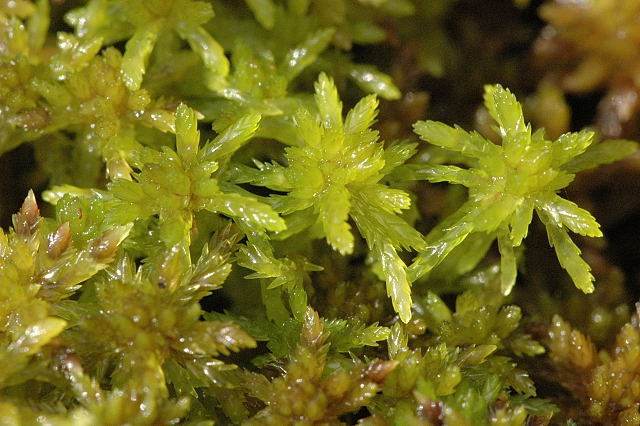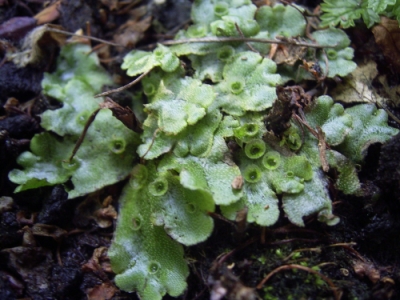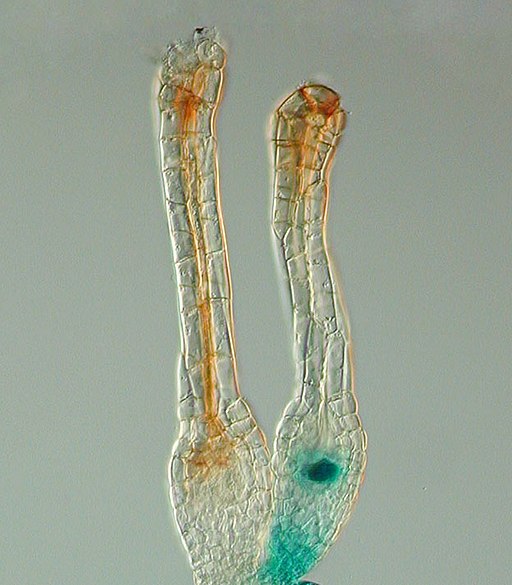Bryophytes are the most simplest and most primitive land plants. Name bryophyte is derived from two words; ‘Bryon’ = moss; ‘phyton’ = plant. At present the phylum Bryophyta includes ~ 960 genera and ~ 24000 species. The present post discusses the Characteristics of Bryophytes highlighting its Habit, Thallus Diversity, Gametophytic and Sporophytic Generations and Life Cycle.
Habit and Habitat of Bryophytes
Ø Byrophytes are cosmopolitan in distribution.
Ø They are quite uncommon in marine environments.
Ø Bryophytes are terrestrial plants but require water at every stages in their life cycle.
Ø They grow usually in moist and shady places.
Ø They fail to complete its life cycle in the absence of water.
Ø Few bryophytes are truly aquatic and underwater forms(example Riccia fluitans).
Ø Peat moss (Sphagnum moss) grown in bogs and marshy areas.
Ø Porella is an epiphytic bryophyte that grow on tree trunks.
Ø Radulla protensa is an epiphyllous bryophyte grow on the surface of leaves.
Ø Tortula desortorum is a xerophytic bryophyte growing in deserts.
Ø Bryophytes are fundamentally land plants.
Land Aadaptations of Bryophytes
§ Possess root like rhizoids to absorb water from soil.
§ Free surface of epidermis is coated with water proof waxy coating to prevent water lose and protect against desiccation.
§ They possess stomata like structures for gaseous exchange.
§ Possess multicellular sex organs surrounded by sterile jacket.
§ After fertilization the zygote is left inside the archegonium to provide nutrition for the sporophyte development.
§ These features helps bryophytes to live in land condition.
Riccia fluitans (source wikipedia)
Bryophytes the Amphibians of Plant Kingdom
Ø Amphibians in the animal kingdom lives in water as well as in land.
Ø Similarly bryophytes represented by liverworts, hornworts and mosses grow well in the areas between water and terrestrial habitats (amphibious zone).
Ø Bryophytes are dependent on water to complete their life cycle.
Ø Presence of water is required and essential for the:
§ Dehiscence of mature antheridia
§ Liberation of antherozoids form antheridia
§ Transfer of antherozoids form antheridia to archegonia
§ Opening of archegonial neck
§ Movement of flagellated antherozoids into the archegonial neck.
Ø Life cycle of bryophytes will not complete in the absence of water.
Ø Thus they are called as the amphibians of plant kingdom.

Anthoceros (hornwort) (source wikipedia)
Gametophyte of Bryophyte
Ø Life cycle consists of gametophytic and sporophytic phases (generations).
Ø Gametophytic and sporophytic generations are physically connected.
Ø Gametophytic and Sporophytic phases are Heteromorphic (morphologically distinct).
| You may also like NOTES in... | ||
|---|---|---|
| BOTANY | BIOCHEMISTRY | MOL. BIOLOGY |
| ZOOLOGY | MICROBIOLOGY | BIOSTATISTICS |
| ECOLOGY | IMMUNOLOGY | BIOTECHNOLOGY |
| GENETICS | EMBRYOLOGY | PHYSIOLOGY |
| EVOLUTION | BIOPHYSICS | BIOINFORMATICS |
Ø Characteristic of gametophytic generation of Bryophyte:
@. Gametophytic generation is more conspicuous phase in life cycle
@. Gametophytic generation is long lived and prominent phase
@. It is independent, green autotrophic phase
@. Gametophytic plant is fleshy
@. In lower forms gametophyte is undifferentiated and thalloid
@. In higher forms, gametophyte is differentiated into root like, leaf like and stem like structures
Moss Capsule (source wikipedia)
Ø Characteristics of sporophytic generation of Bryophyte:
@. Sporophytic generation is less conspicuous phase in life cycle.
@. Sporophytic generation is short lived.
@. Sporophyte is completely dependent on gametophytic plant for nutrition.
@. Usually differentiated into foot, seta and capsule.
Ø In primitive forms (Riccia and Marchantia) gametophyte is undifferentiated, prostrate and thalloid.
Ø In advanced forms (mosses) plant body is erect, differentiated into stem (axis), lateral appendages (leaves) and rhizoids.
Ø True roots are absent in bryophytes.
Ø Rhizoids are present, rhizoids helps in anchorage and absorption.
Ø Rhizoids may be unicellular and un-branched to multicellular branched.
Ø Sometimes multicellular scales may be present.
Ø Scales helps to protect growing region of the thallus.
Ø Plant body consists of parenchymatous cells only.
Ø Thick walled and lignified cells are completely absent in all phases.
Ø Vascular tissue are completely absent.
Ø Plant body sometimes internally differentiated into photosynthetic and storage zone (labour division).
Reproduction of Bryophytes
Ø They reproduce by vegetative and sexual reproduction.
Marchantia with Gemmae (source wikipedia)
Ø Vegetative multiplication takes place by:
§ Death and decay of older parts
§ Fragmentation of thallus
§ Adventitious branches
§ Tuber formation
§ Production of gemmae on gemmae cups
Sexual Reproduction in Bryophytes
Ø Sexual reproduction is oogamous type
Ø Sex organs are multicellular
Antheridia (LS) (source wikipedia)
Ø Sex organs are more complex than thallophytes (algae, fungi and lichens).
Ø Male sex organ is called antheridia.
Ø Antheridia are stalked and globose.
Ø They have one cell thick sterile jacket around it for protection.
Ø Jacket surrounds a solid mass of fertile cells called antherocytes.
Ø Antherocytes metamorphose into antherozoids.
Ø Antherozoids are bi-flagellate and thus they are motile (can swim in water).
Archegonia (LS) (source wikipedia)
Ø Female sex organ is called archegonia.
Ø Archegonia is a flask shaped structure.
Ø Archegonia have basal swollen venter and an elongated upper part called neck.
Ø The ventre and neck are surrounded by one layer thick sterile jacket cells.
Ø Four to six neck canals cells and one venter canal cell is present.
Fertilization in Bryophytes
Ø Water is necessary for fertilization.
Ø When antheridia matures, their sterile jacket disintegrate and liberate the motile anthropoids to the surrounding thin film of water.
Ø When archegonia matures, the neck canal cells and venter canal cell disintegrate and forms a mucilage mass.
Ø The cover cells of the archegonia opens and the mucilage ooze out through the pore into the thin film of water.
Ø Antherozoids are attracted by chemicals present in the mucilage and move towards it by chemotaxis through the thin film of water.
Ø Antherozoids enters into the archegonium through neck and venter.
Ø Antherozoids fuse with egg to from a diploid zygote.
Sporophyte of Bryophytes
Bryum Gametophyte & Sprophyte (source wikipedia)
Ø Sporophyte develop from embryo.
Ø Zygote is the first stage in the diploid sporophytic generation.
Ø Zygote does not have any resting period.
Ø Zygote mitotically divide immediately after fertilization.
Ø Bryophyts shows exoscopic mode of embryo development.
Ø First division of zygote is always transverse to produce two cells (outer cell and inner cell).
Ø Outer cell give rise to embryo.
Ø Embryo develops within the ventre of archegonium.
Archegonia (source wikipedia)
Ø Sporophyte is simple structure without rhizoids stem or leaves.
Ø Sporophyte is completely dependent on gametophyte for nourishment.
Ø Sporophyte is s projecting structure in most of the forms, it project out from the gametophytic tissue.
Ø Sporophyte is differentiated into foot, seta and capsule.
Ø Sporogenous cells present in the capsule divide meiotically to produce haploid spores.
Ø All spores are similar in shape and size (homosporous).
Ø Sometimes elaters are present.
Ø Elaters are hygroscopic and they helps in spore dispersal.
Ø Spores are non-motile and they disperse exclusively by wind or water current.
Ø Under favorable condition the spores germinate to form the gametophytic plant.
Ø In lower forms, the germination of spores is by the formation of a germ tube which later divide to give rise the younger gametophyte (Riccia, Marchantia).
Ø In advanced forms (mosses) spores germinate to form a filamentous branched protonema.
Ø From the protonema, many gametophytic plants arises.
Key questions
- What are bryophytes?
- What are the characteristics of bryophytes?
- Explain the life cycle of bryophytes.
- Explain the reproduction in bryophyte.
- Explain the structure of Antheridium and Archegonium of Bryophyta.
- Explain alternation of generation in bryophytes.
- What are the economic importance of bryophytes?
- What are the ecological importance of bryophytes?
| You may also like... | ||
|---|---|---|
| NOTES | QUESTION BANK | COMPETITIVE EXAMS. |
| PPTs | UNIVERSITY EXAMS | DIFFERENCE BETWEEN.. |
| MCQs | PLUS ONE BIOLOGY | NEWS & JOBS |
| MOCK TESTS | PLUS TWO BIOLOGY | PRACTICAL |
You may also like…






